How To Draw Female Body Poses
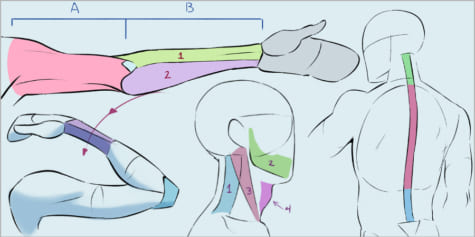
Understanding the structure of the human body is key to improving your character illustrations! With this illustrated tutorial by Eridey, learn more about bones, muscles and discover how the different parts of the body are connected to each other.
The key to improving is to do our best and put our heart into what we do. Anatomy is not an easy subject, but I hope that this article can be a quick guide for you and get you in the mood to keep learning. Let's start with the building blocks of the human figure:
The spine is the body's support, also allowing motion in the torso. Its vertical shape differentiates humans from other species. It is not a straight line, but a curve. Its shape makes the pelvis and the rib cage tilt slightly. Let's divide it up into three parts to see it better:
- Cervical spine — supports and provides mobility to the head
- Dorsal or thoracic spine — supports the ribs.
- Lumbar spine — a little before the pelvis, connected to the sacrum.
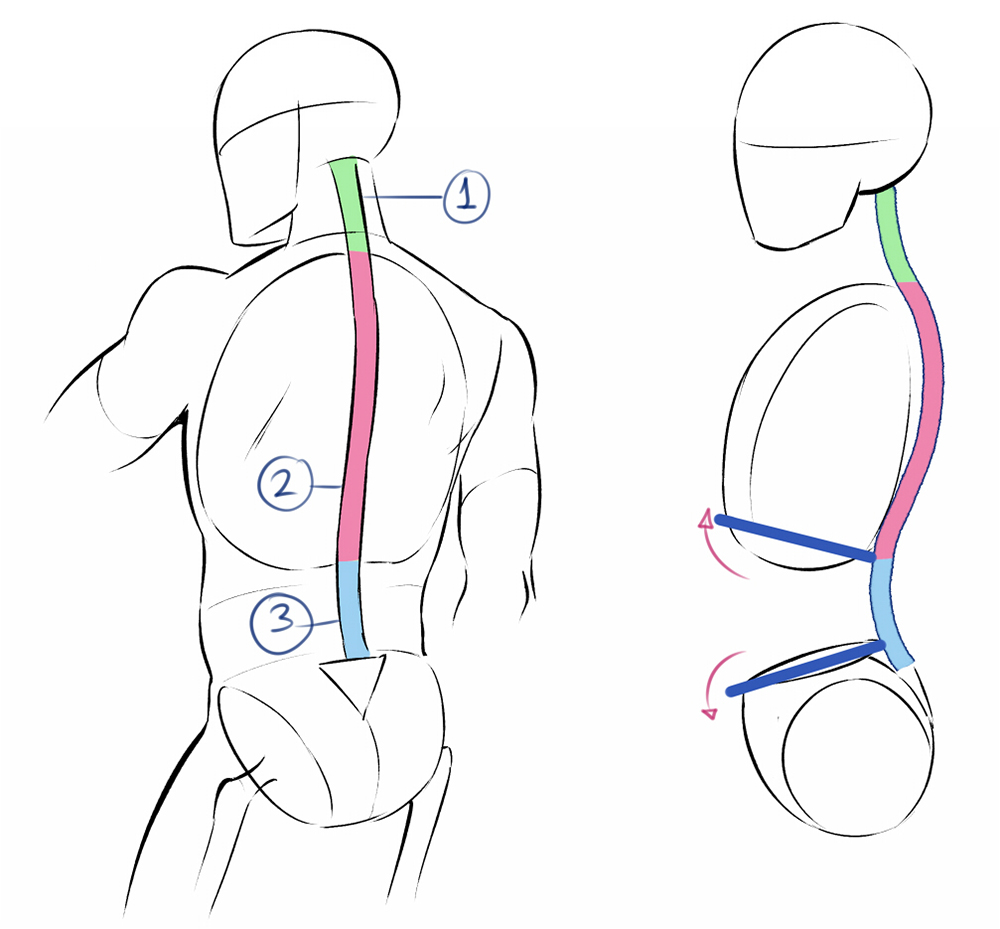
In the neck, the cervical spine (1) is located just behind the jaw (2). There are a variety of muscles that operate the movement of the head. The most visible one has a very, very long name (sternocleidomastoid!), but you can easily recognize it by its V shape, parting from the ear to the center of the clavicles (3). In the center of these muscles is the Adam's apple, which is more prominent in men (4).
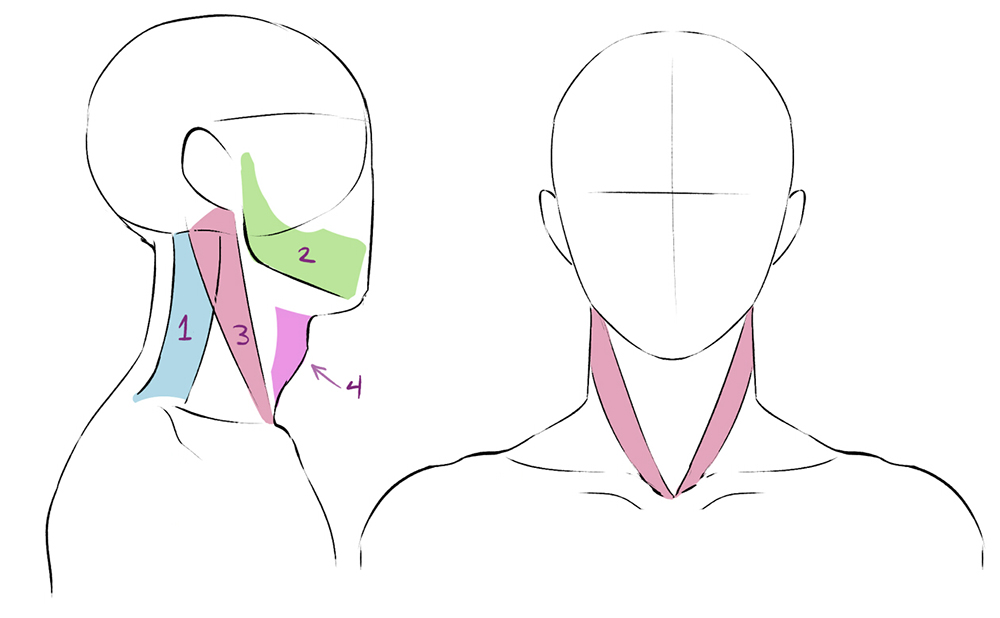
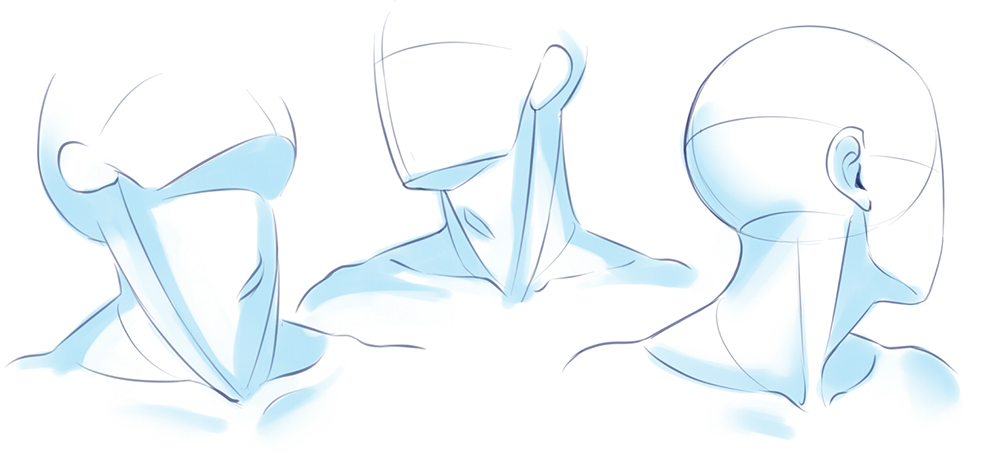
The dorsal spine is the part that connects to the arms. You can draw it in many ways, I like to give it an ovoid shape that resembles the shape of the ribs (1).
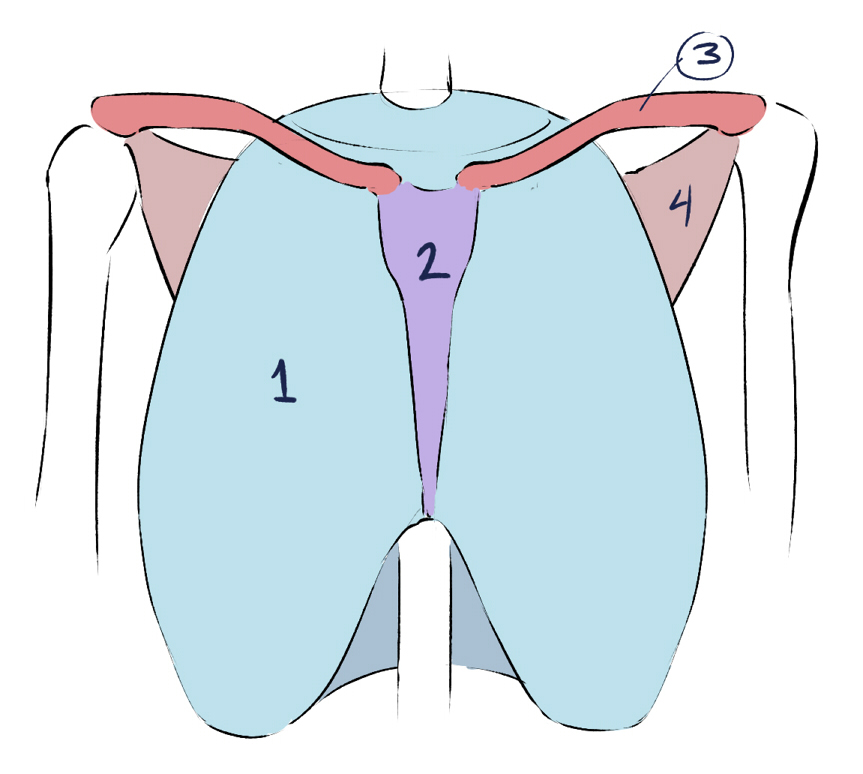
The sternum (2) closes this structure in the front, creating, with the spine, an imaginary line that divides the body into two. Use them as a guide!
The clavicles (3) are like a bicycle handlebar, you can think of them as a shoulder support. Every time the arms move, they will change direction.
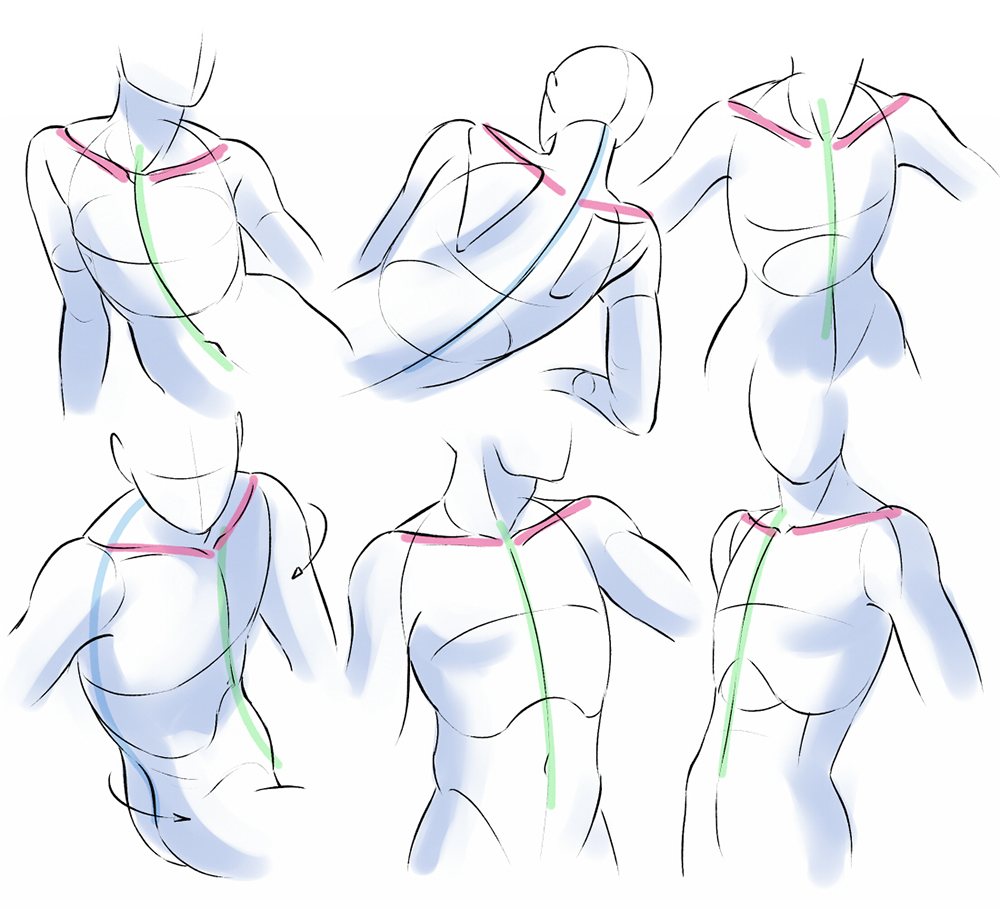
In the back, you will find the scapulae or shoulder blades. They are triangle shaped and help move the arms. The shape of the back changes following the movements of these bones.
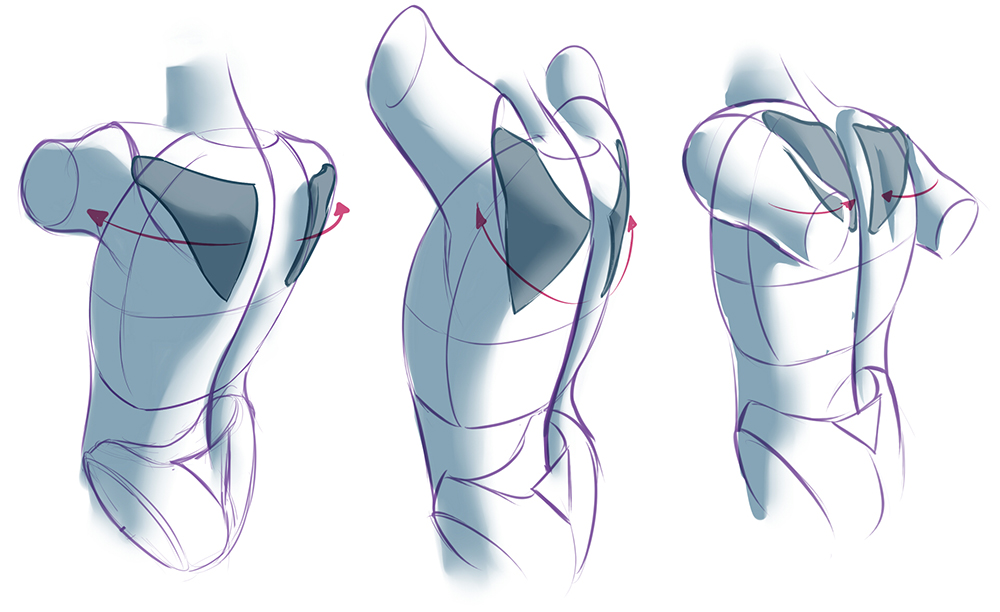
The pelvis is located at the end of the torso, connected to the lumbar spine from the sacrum (1). On both sides you can see the ilium (2); and in the front, the pubis (3).
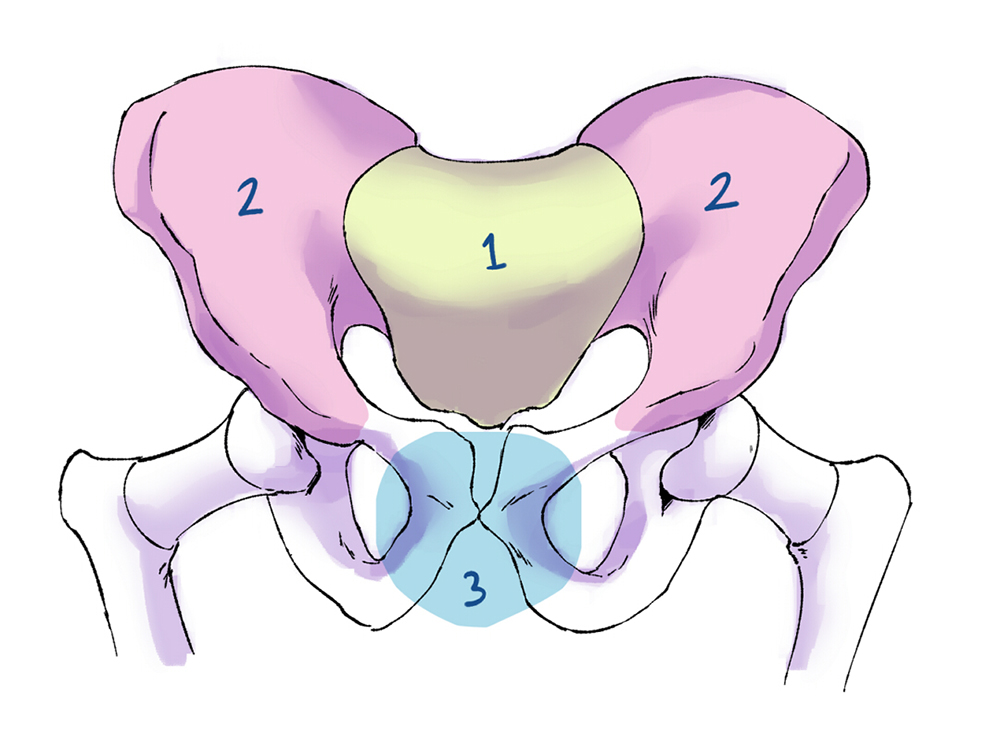
As these are somewhat irregular bones, I like to simplify them by drawing a pair of discs for the ilium, and the sacrum as an inverted triangle.
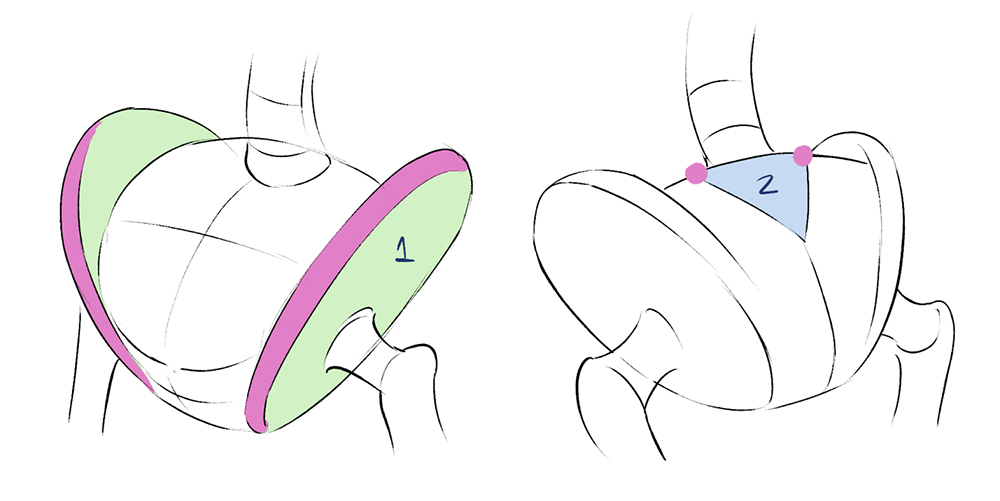
The ilium (1) will guide you to draw the angles of the hip. On the back, these two dimples at the end of the spine, before reaching the buttocks, will help us identify the sacrum (2).
Note that female hips are generally wider than male hips — one of the main differences.
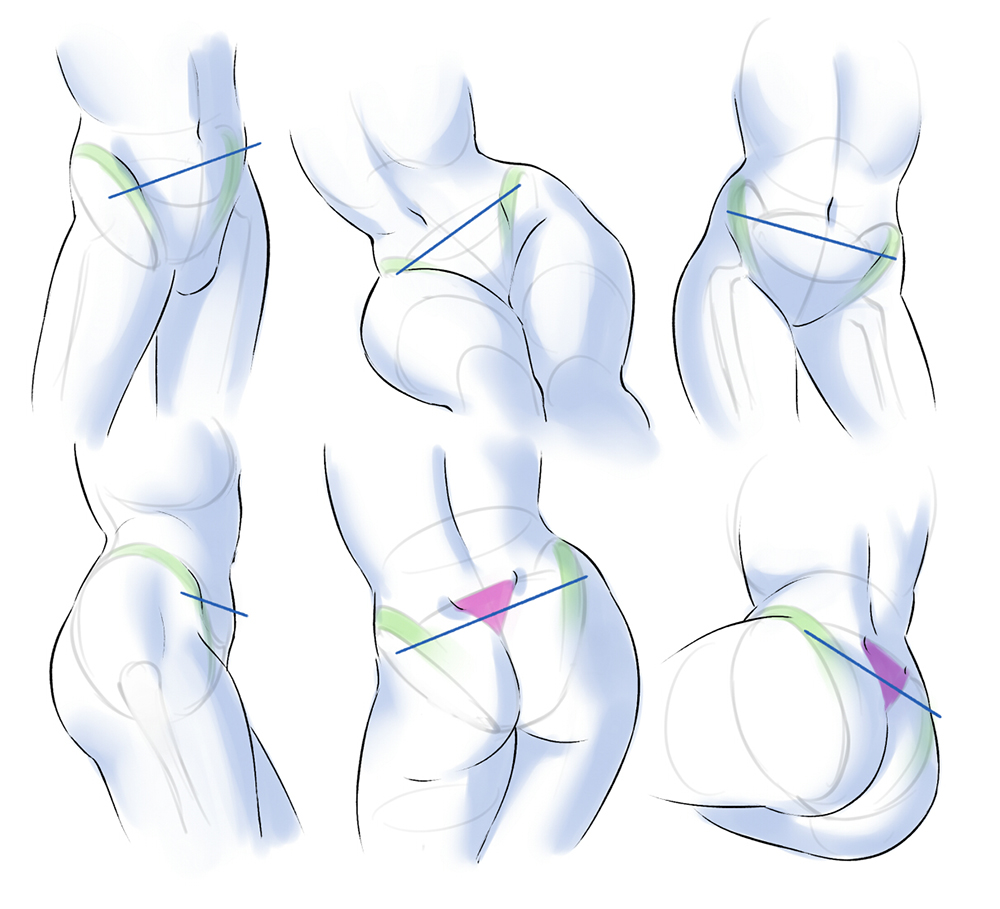
Limbs
Limbs can move in many ways, but knowing their limitations will save us from drawing unrealistic poses (or bone-breaking poses, ouch!).
Arms:
In the upper part of the arm (A) there is the humerus, a long and strong bone that connects to the elbow and articulates the forearm (B).
In the forearm you will find the radius (1) and the ulna (2). These bones cross to allow the rotation of the wrist. Some artists draw part of the forearm as a box to define its volume (3).
Can you see a tiny lump just behind your wrist? (4) It is part of the ulna. You can use it as a reference point to locate the orientation of the arm.
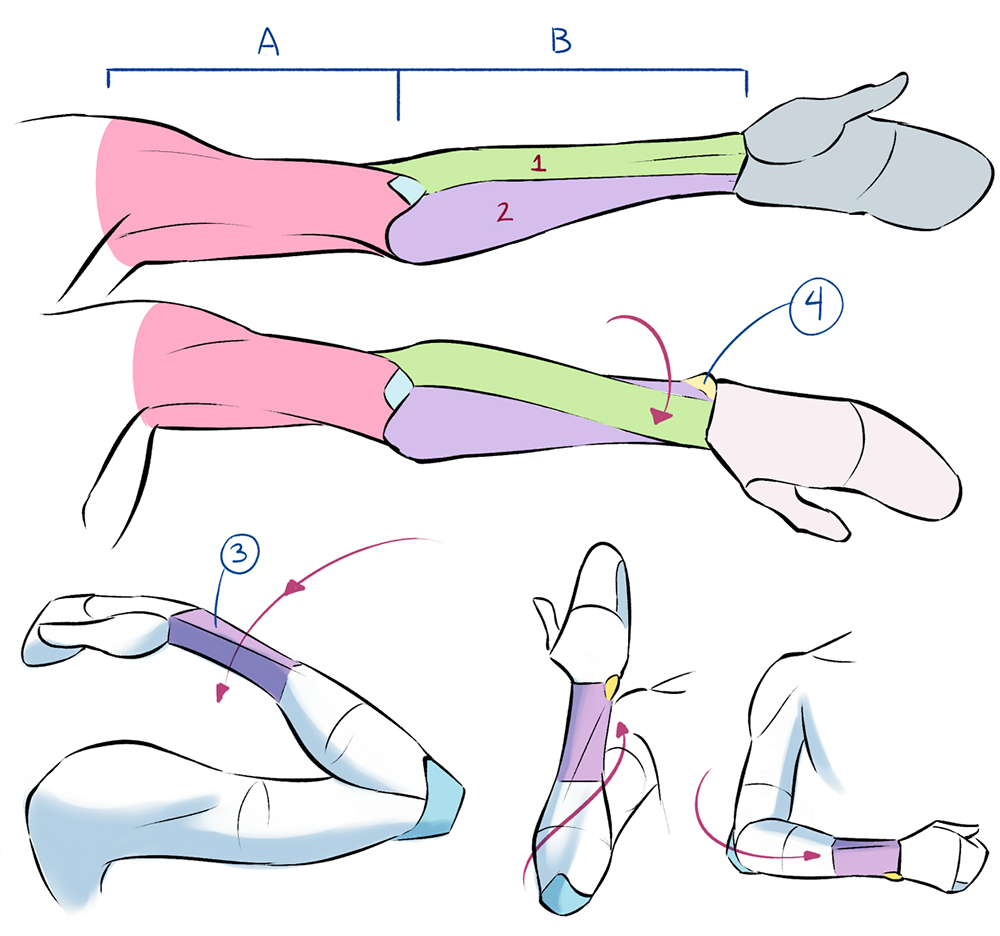
Legs:
In Fig. A we have the leg bones:
The femur (1) in the thigh; the knee (2) in the middle of the leg; the fibula (3) and the tibia (4) in the calf area.
The legs should support the body and give it the balance it needs, but there is a detail that sometimes escapes us: the legs do not have completely vertical line. In order to achieve balance, there must be rhythm. Notice the slight inclination in the femur from the hip to the knee, and the curves (fig. B) that create the contour of the leg (side view).
Other interesting details about the leg:
Between the hip bone and the femur, there is a space that can be seen as an indentation in the skin, mainly in men who have less muscle mass in that area.
In figure C, we have the ankle. Its bones are placed at different heights, with the fibula on the outer side (*) being lower.
Figure D is a back view of the knee. On the outer side (*) the muscles do not generate too much change in the contour, but on the inner side a small lump is created (I have also pointed this out in figure A).
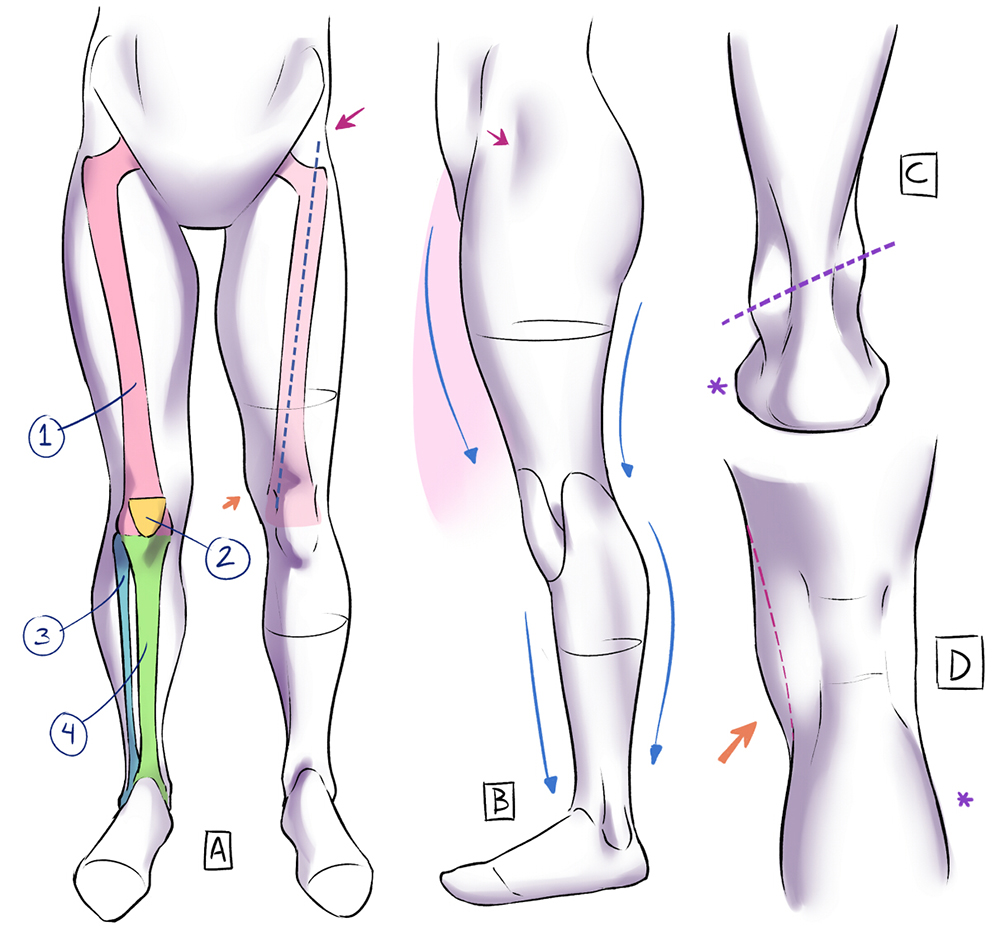
Proportions
According to some academic standards, 7 or 8 heads is the ideal height of an adult. However, each person has different proportions according to their physical characteristics. If you compare people of different heights you will notice that individually they maintain proportions according to their own body.
To prove this, let us look at the following example: two adults, a man and a woman. Although the female figure is shorter, her body is divided into 7 heads (which fits within the standard) and the male figure is only a third of a head taller
In the example I have also included the figure of a child. Take into account that, at early ages, the body has not developed completely, so their measures are a little undefined. This one is about 5 heads high.
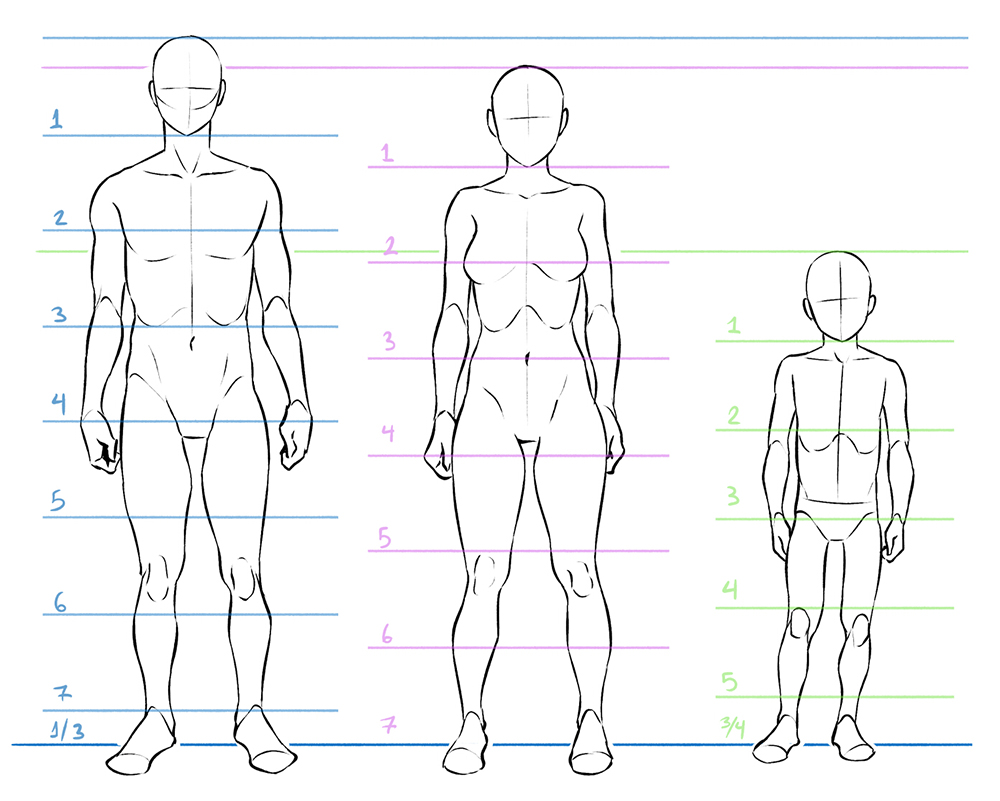
Aside from this, artists do change their characters' proportions totally out of these "ideal" ones, to emphasize their unique characteristics or to enhance their drawing styles. (But this is not an excuse to ignore the fundamentals!)
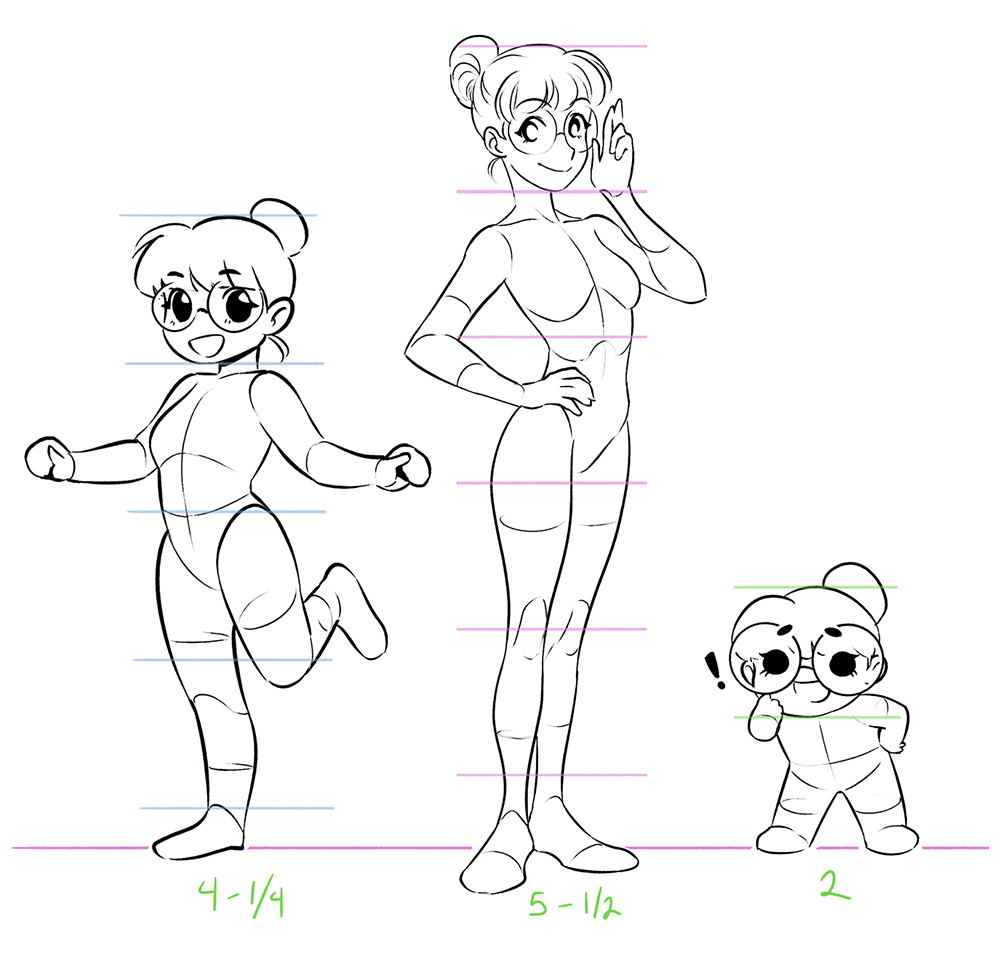
A trick! I like comparing elements of the same length, just to make sure that everything is well proportioned as I draw. For example, the hands are about the size of the face; the feet are as long as the forearm.
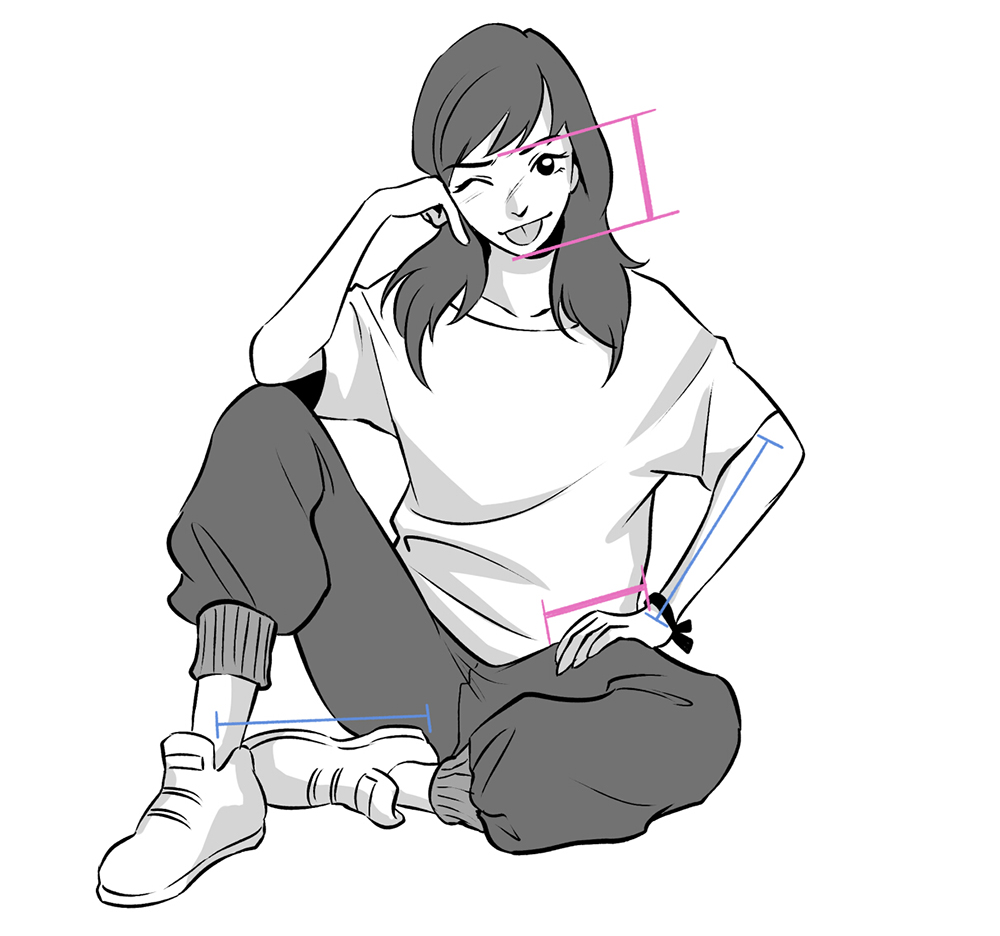
Another piece of data that I find fascinating is the fact that, if you extend your arms, they are side to side the same length as your height!
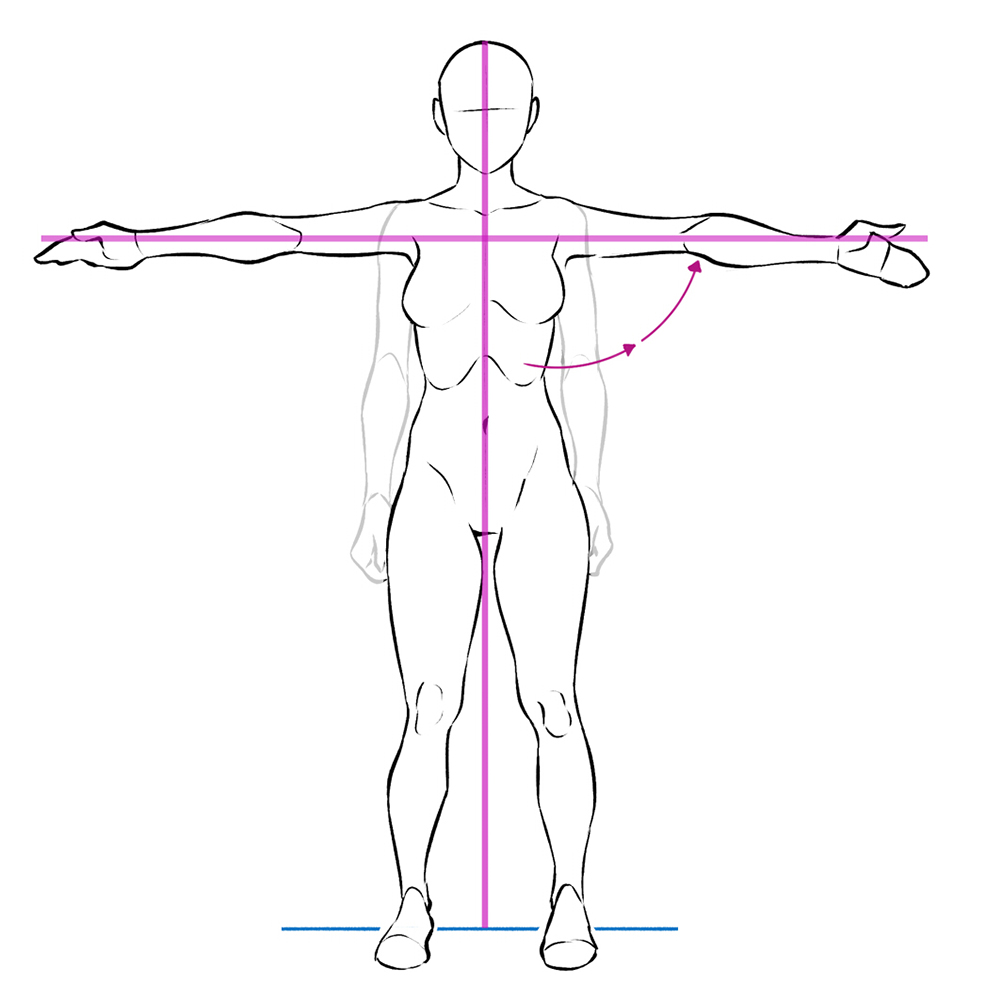
Finally, four points which will help us to get better at drawing day by day.
- Observation: Study how people walk, their poses, the different types of bodies… Create a reference gallery in your mind and, if possible, take pictures!
- Think in 3D: To understand a figure/shape, the best thing is to analyze it from different perspectives.
- Research: Read about body parts, bones, muscles, functions, etc. From an artist's point of view is fine, you do not need to become a doctor! We are interested in those anatomy parts which affect the shapes and movements of the body.
- Draw, draw, draw! Practice drawing the whole figure and detailed studies of some especially difficult parts.
Thank you very much for reading!
If you like, you can check out my social networks and my portfolio to see some of my work.
Bring Energy and Life to Your Poses!
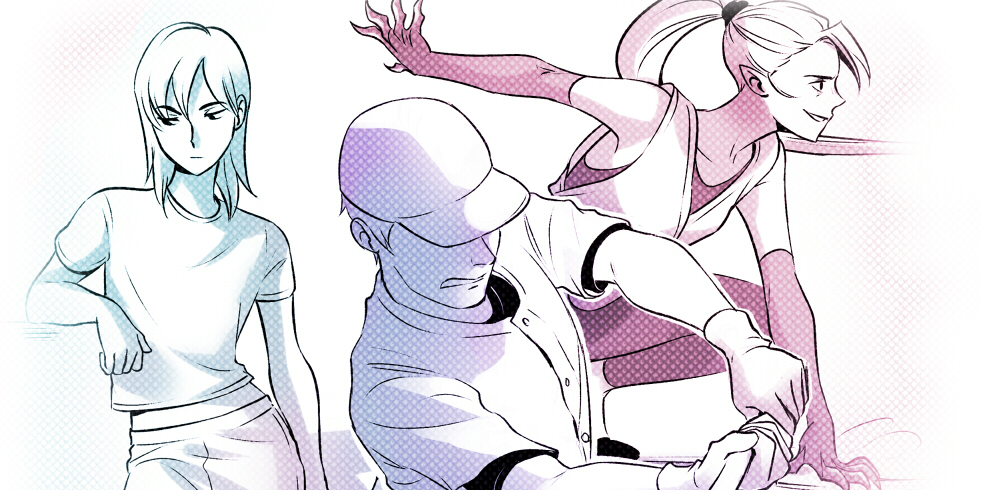
How To Draw Female Body Poses
Source: https://www.clipstudio.net/how-to-draw/archives/161109
Posted by: pendarvisstideass60.blogspot.com

0 Response to "How To Draw Female Body Poses"
Post a Comment